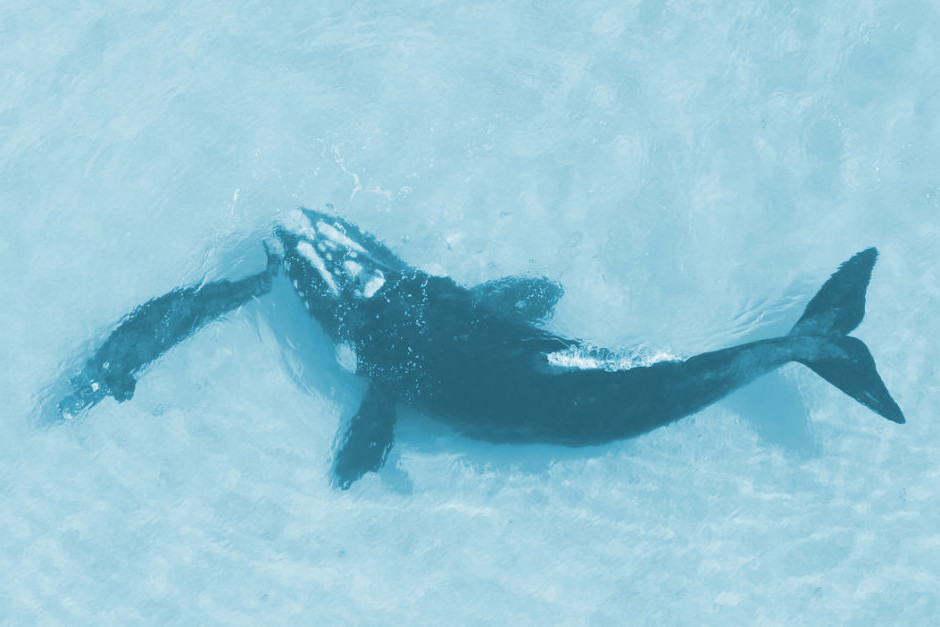Drones reveal whale weight change
 Researchers using drones to observe southern right whales have for the first time revealed the high cost on the mother of giving birth and raising a young calf.
Researchers using drones to observe southern right whales have for the first time revealed the high cost on the mother of giving birth and raising a young calf.
The whales have one of the fastest offspring growth rates of any mammal on earth.
“However, until now very little has been known about the toll this takes on the mother because it has not been possible to apply standard field metabolic techniques,” says Dr Fredrik Christiansen from the Murdoch University Cetacean Research Unit.
The researchers used drone photography to develop a novel method of measuring the amount of energy required for whales to reproduce.
The researchers monitored 40 mother-calf pairs, taking 1,118 photos of body size estimates over periods ranging from 40 to 89 days.
Southern right whales journey thousands of kilometres from their sub-Antarctic feeding grounds to the Head of Bight, South Australia to give birth. They stay for about three months to fatten their calves before returning to Antarctica.
For about four months they do not eat and rely solely on their fat stores.
“We quantified the cost of early calf growth for the mothers over a three-month breeding season by comparing the relationships between calf growth rate and the rate of loss in maternal body volumes,” Dr Christiansen said.
“Southern right whales give birth to large offspring (~5m in length) which are about one-third the size of the mother when born and double in size by the time they are weaned three months later.
“Calves grow really fast during the first months of their life and so there is a considerable energetic cost to the mother during lactation, since she is not feeding during this time and only relies on her own body reserves.
“Lactating females lose an average of 25 per cent of their body volume in the first three months of lactation while the calf grows by an average of 3.2cm in length each day.
“The study shows the considerable energetic cost that females face during lactation and highlights the importance of having sufficient maternal energy reserves to reproduce,” he said.
It cost the mothers around 126 litres of volume per day to feed their calf and support their own metabolic needs. At the same time the calf grows on average about 80 litres in volume daily. The mean volume conversion efficiency from mother to calf was around 68 per cent.
Dr Christiansen said the loss of volume in the mother was proportional to the energy she invested in her calf.
Longer and more rotund females invested more energy in their calves compared to shorter and leaner females.
“However, a big female in poor condition can invest the same energy as a small female in superb condition so human disturbance of a small female may have a bigger negative impact on the species reproduction” he said.
“By knowing the cost of reproduction for southern right whale females, we can now use drones to monitor the body condition of this population between years to see if females have sufficient energy reserves to successfully wean their calf. Anthropogenic factors such as shipping, oil and gas development and climate change can all negatively affect the body condition of whales, which in turn can cause negative effects on reproduction.”








 Print
Print